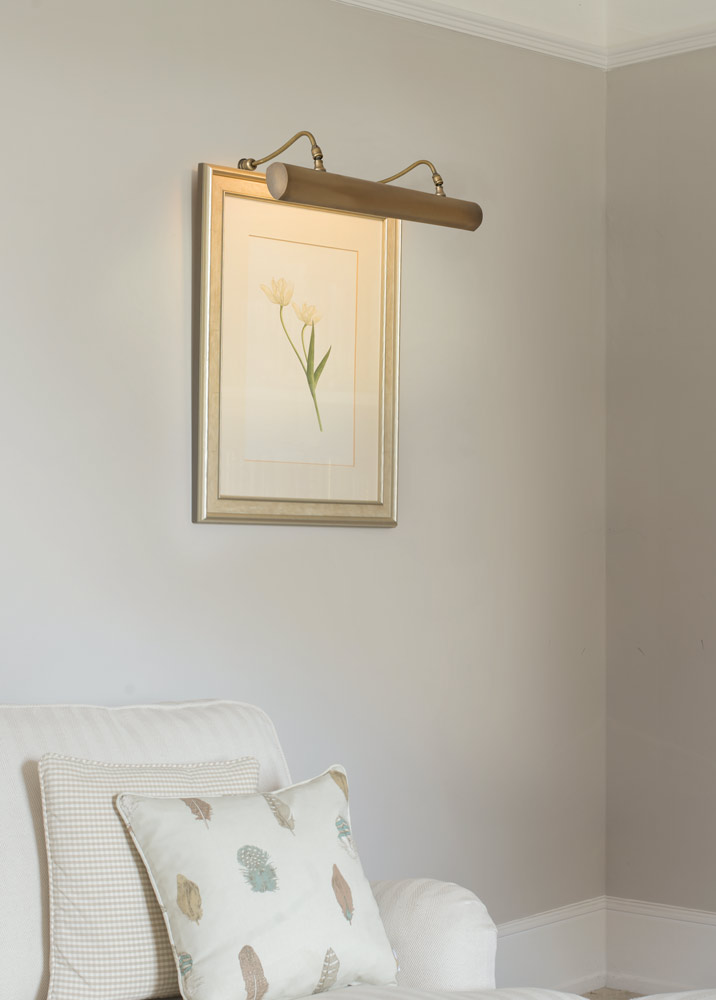DefaultPageTemplate.ascx

A GUIDE TO LIGHTING PICTURES
Picture lights do not just belong in art galleries and stately homes. If you add suitable lighting to your pictures at home, you can bring out the detail, colour and beauty of your artwork. Lighting a picture is not an exact science but there are a few things you need to consider:

1. NATURAL LIGHT
How much natural daylight is their in your room? Artwork needs to be protected from light damage - particularly daylight - but you will also need to protect it from damage caused by too much artificial light.
Try to position your picture out of direct sunlight and limit the amount of time you light it artificially.
Do not use fluorescent bulbs as they have an excess of UV light which fades colour quickly so this type of lighting is probably best avoided if you have a valuable painting.
2. GLARE
If your picture is behind glass you need to consider glare. Try lighting it from different angles to reduce the glare.
Gallery lighting is accomplished by positioning lighting directly above the artwork and fairly close to it, forcing the light to hit the artwork at a steep angle. This way you only see reflections if you are below the artwork, looking up at it.
If it is still a problem, you could consider replacing the glass with a non-reflective glass check carefully before you do this though asit could make your picture look slightly fuzzy.
3. EVEN SPREAD
Aim for an even spread of light across the whole surface of your painting. This is best be achieved by using a purpose made picture light positioned directly above your picture to offer illumination without obstruction.
If you are unable to use a purpose made picture light, you could consider an uplighter at floor level angled to direct the light onto your picture from below.
Alternatively, use wall or ceiling spotlighting where the individual spots can be adjusted to angle the light onto your pictures.
Floor lamps and table lamps that have directional light are also useful.
4. Watercolours
The soft nature of watercolours means they need a lower level of illumination than modern acrylics that need lots of bright light.
The light level can often be adjusted by changing the wattage of the bulbs used.
5. Central Position
Picture lights should be positioned centrally above the picture and most have adjustable heads that can be swivelled to direct the light correctly onto the picture below.
Do not choose a picture light that extends beyond the borders of the picture.
6. Landscapes
For landscape shaped pictures, use a picture light that is 1/2 to 1/3 the size of the picture, not including the frame.
7. Portraits
For portrait shaped artwork, choose a picture light that is about 1/2 the width of the picture not including the frame.
If your picture has a really wide frame you may need to choose a slightly different size to ensure the balance is maintained.